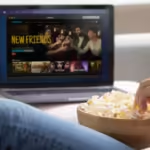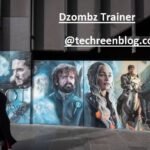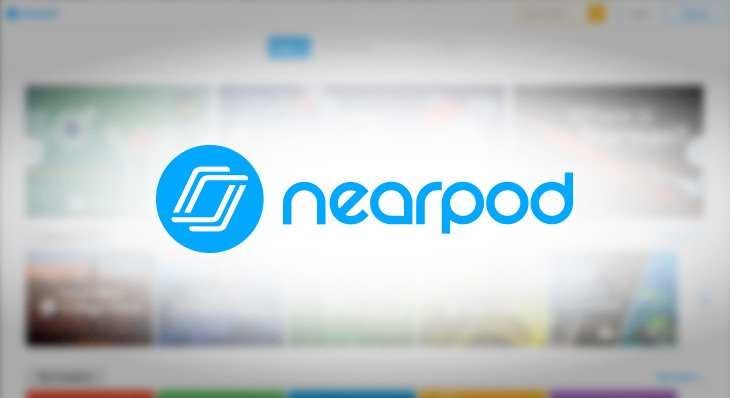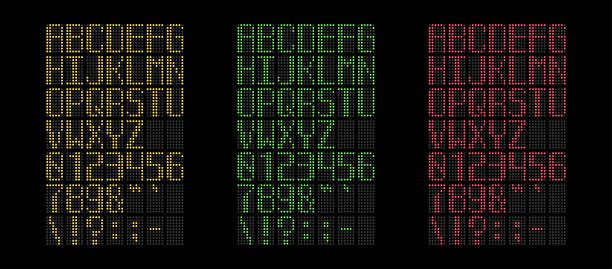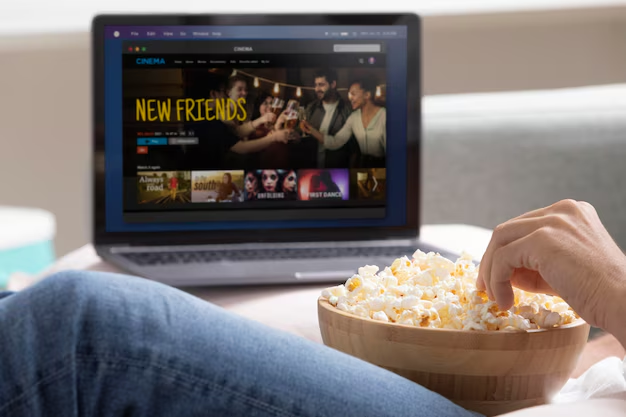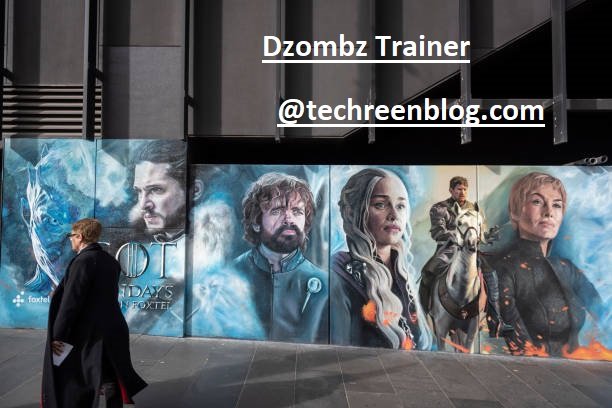Introduction
In the contemporary rapidly evolving academic panorama, Nearpod code stands proud as an effective tool, revolutionizing study room stories with its modern code-based total capabilities. These capabilities empower educators to create dynamic, interactive, and personalized learning studies tailor-made to various pupil desires. From customizable classes to gamified studying experiences, Nearpod’s code unlocks countless opportunities for engagement, creativity, and energetic getting to know. In this newsletter, we will explore how Nearpod’s code is reshaping training, empowering educators, and inspiring lifelong studying among college students globally.
Customizable Lessons: Nearpod Code
Nearpod’s code lets educators create tremendously personalized training tailored to the unique needs and pursuits of their students. This function allows instructors to contain a wide variety of content material codecs, along with text, snapshots, films, audio recordings, and interactive elements consisting of quizzes, polls, and open-ended questions.
By customizing lessons with Nearpod code, educators can obtain knowledge of patterns, possibilities, and scalability levels inside their lecture rooms. For example, instructors can adapt the tempo, complexity, and intensity of coaching to satisfy personal pupil needs, making sure a more enticing and powerful knowledge of enjoyment for all.
Interactive Simulations:
Nearpod code empowers educators to embed interactive simulations, digital labs, and 3D models into their instructions, offering college students hands-on reports to explore complicated principles in technological know-how, arithmetic, engineering, and more. These interactive simulations allow students to manipulate variables, conduct experiments, and visualize summary ideas in a dynamic and immersive environment.
By enticing with interactive simulations, college students can expand deeper expertise in clinical concepts, mathematical concepts, and trouble-fixing strategies, fostering critical questioning abilities and inquiry-based mastering.
Collaborative Projects:
Nearpod’s collaborative coding capabilities facilitate teamwork, hassle-fixing skills, and creativity among college students by allowing them to paint together on coding projects. Through collaborative coding sports, college students can collaborate on coding assignments, share ideas, debug code, and peer-review each different’s paintings in real-time.
By running collaboratively, students can expand conversation talents, teamwork skills, and an experience of collective obligation, getting ready for fulfillment in collaborative painting environments and selling a supportive and inclusive schoolroom subculture.
Coding Challenges: Nearpod Code
Nearpod code allows educators to lay out coding challenges that encourage students to use their programming expertise to remedy actual-world problems and enhance their computational questioning competencies. These coding challenges can also involve writing code to resolve puzzles, create algorithms, develop software program packages, or automate duties.
By taking part in coding demanding situations, students can give a boost to their trouble-solving abilities, logical reasoning talents, and resilience within the face of demanding situations. Moreover, coding challenges foster a growth attitude, where students include errors as possibilities for getting to know and non-stop improvement.
Virtual Field Trips:
Nearpod’s code-based digital area journeys offer students the opportunity to discover distant lands, historic websites, and immersive environments without leaving the lecture room. Through digital truth (VR) experiences, college students can go to famous landmarks, ancient monuments, natural wonders, and cultural sights around the arena, enhancing their knowledge of geography, history, and cultural diversity.
Virtual field journeys engage students in experiential learning, wherein they can look at, discover, and interact with virtual environments, fostering curiosity, empathy, and international attention. Additionally, virtual area trips offer get right of entry to to instructional studies that may otherwise be inaccessible because of geographical or logistical constraints, ensuring equitable entry to to gaining knowledge of opportunities for all students.
Gamified Learning:
Nearpod’s code allows educators to infuse game-primarily based factors into their classes, transforming traditional studying sports into enticing and interactive reviews. By incorporating factors inclusive of points, badges, leaderboards, challenges, and rewards, educators can gamify learning activities to grow pupil engagement, motivation, and retention.
Gamified mastering reviews leverage the inherent enchantment of games to capture students’ hobbies and sustain their interest at some stage in the lesson. Through gamification, educators can create a fine studying environment in which students are influenced to actively take part, compete with their friends, and attempt to acquire mastery of the content.
Augmented Reality (AR) Experiences:
Nearpod’s AR functions permit educators to enhance learning stories with the aid of masking virtual content material onto the physical international, growing immersive and interactive augmented reality reports. With Nearpod code, educators can design AR simulations, digital excursions, interactive diagrams, and 3D fashions that convey abstract ideas to existence and beautify students’ know-how via visualizations and interactive elements.
AR reviews permit college students to discover complex standards in technology, arithmetic, geography, and different topics in a dynamic and tasty way. By integrating AR into training, educators can provide college students with specific opportunities to engage with content, manipulate gadgets, and visualize principles in approaches that aren’t feasible with conventional teaching strategies.
Personalized Learning Paths:
Nearpod code empowers educators to design personalized knowledge of paths for male or woman college students, tailoring coaching to satisfy their precise mastering desires, options, and pace of gaining knowledge. By leveraging facts analytics and adaptive mastering algorithms, educators can become aware of every pupil’s strengths, weaknesses, and learning options to create customized studying stories.
Personalized mastering paths can also consist of differentiated training, targeted interventions, remediation sports, enrichment possibilities, and adaptive checks designed to satisfy college students at their stage and mission them to reap their complete ability. By supplying college students with personalized learning experiences, educators can maximize getting-to-know results, promote self-directed knowledge, and cultivate a boom mindset among students.
Real-time Feedback:
Nearpod’s code-based evaluation gear allows educators to offer real-time remarks to students, permitting them to display pupil progress, perceive misconceptions, and adjust training as a result. Through interactive quizzes, polls, surveys, and open-ended questions, educators can gauge scholar understanding, examine learning results, and offer immediate feedback to manual college students’ learning adventures.
Real-time remarks foster a formative assessment method, wherein educators can pick out to-know gaps, interfere as wished, and scaffold preparation to aid college students’ gaining knowledge of desires. By imparting well-timed and actionable comments, educators can empower students to mirror their getting to know, cope with misconceptions, and make non-stop enhancements to their understanding and talents.
Multimedia Presentations:
Nearpod code permits educators to create multimedia-wealthy displays that cater to diverse getting-to-know patterns and possibilities. By integrating videos, audio recordings, photographs, animations, and interactive factors into shows, educators can enhance the visible and auditory attraction of training, seize students’ interest, and make stronger key ideas through multiple modalities.
Multimedia presentations offer students with possibility to engage with content in meaningful ways, which includes watching educational films, paying attention to audio causes, viewing visualizations, and interacting with interactive elements. By catering to various learning patterns and choices, multimedia presentations can enhance students’ comprehension, retention, and engagement with the fabric provided.
Flipped Classroom Model:
Nearpod’s code empowers educators to put into effect the flipped study room version, a pedagogical method wherein instructional content material is delivered online outside of class, permitting elegance time to be utilized for interactive activities, discussions, and initiatives. With Nearpod code, educators can create engaging pre-recorded lessons, interactive shows, and multimedia content that scholars can access remotely at their very own pace.
This asynchronous studying model allows students to study academic substances, engage with content, and complete preliminary activities out of doors of sophistication, liberating precious face-to-face time for collaborative gaining knowledge of, trouble-fixing, and alertness of knowledge. By flipping the classroom, educators can promote lively studying, foster deeper understanding, and customize training to meet the numerous wishes of their students.
Differentiated Instruction:
Nearpod’s code capabilities support differentiated preparation by imparting educators with tools and assets to accommodate numerous newbies’ needs, talents, and pursuits. Through Nearpod code, educators can scaffold practice with the aid of breaking down complex ideas into possible steps, supplying additional guidance and steerage as wished. Moreover, Nearpod offers extension activities that assign advanced inexperienced persons and promote important thinking, creativity, and trouble-solving capabilities.
Additionally, educators can design alternative assessments that permit students to demonstrate their understanding through various formats inclusive of shows, tasks, portfolios, or performances. By offering a couple of pathways to gaining knowledge of and evaluation, the Nearpod code permits educators to distinguish guidance to satisfy the unique desires and preferences of each student, making sure equitable admission to get-to-know opportunities for all.
Accessibility Tools:
Nearpod’s code includes several accessibility functions designed to ensure equitable access to studying sources for all students, including those with disabilities. These accessibility tools consist of closed captioning, which gives textual content-primarily based transcripts of audio content for college students with listening impairments or language boundaries. Nearpod also offers text-to-speech capability, allowing college students with visible impairments or learning disabilities to listen to written textual content and examine it aloud.
Additionally, Nearpod code allows adjustable font sizes, colorings, and assessment settings to house students with visual impairments or reading difficulties. By incorporating accessibility functions into lessons, educators can create inclusive knowledge environments in which all college students can completely take part, engage, and be triumphant.
Formative Assessment:
Nearpod’s code-based evaluation gear allows educators to behavior formative assessments in real-time, permitting them to gauge scholar information, tune progress, and adjust instruction to optimize gaining knowledge of effects. Through interactive quizzes, polls, surveys, and open-ended questions, educators can examine students’ expertise, skills, and attitudes at some stage in the studying method. Nearpod’s code capabilities offer immediate comments to students, permitting them to mirror their learning, address misconceptions, and make adjustments as needed.
Moreover, educators can analyze evaluation statistics to pick out tendencies, patterns, and areas for development, informing academic choices and interventions. By integrating formative evaluation into classes, educators can promote lively studying, foster metacognitive abilities, and facilitate continuous improvement in student mastering.
Cross-curricular Integration:
Nearpod’s code allows go-curricular integration by permitting educators to create interdisciplinary instructions that join diverse challenge areas, fostering holistic studying studies. Through Nearpod code, educators can design training that integrates content material from multiple disciplines, which includes science, arithmetic, language arts, social studies, and the humanities.
For instance, educators can create interactive displays that explore the historical context of scientific discoveries, integrate mathematical principles into literary evaluation, or contain language arts skills into scientific inquiry.
By connecting learning across disciplines, Nearpod code promotes vital thinking, creativity, and hassle-solving capabilities, getting ready college students to succeed in an interconnected global. Additionally, pass-curricular integration fosters deeper know-how of content material, complements retention, and promotes a switch of getting to know throughout contexts.
Student-Created Content:
Nearpod’s code-primarily based features empower students to take an energetic position in their learning via developing their own multimedia displays, interactive sports, and tests. Through Nearpod code, college students can explicit their information of principles, demonstrate creativity, and interact in self-expression.
For example, college students can create virtual testimonies, interactive quizzes, multimedia shows, and collaborative tasks to exhibit their understanding and talents. By developing content, college students increase important thinking, problem-fixing, and communication abilities while taking possession of their mastering reviews.
Professional Development:
Nearpod code enables educators to design and deliver expert development classes, workshops, and schooling modules for colleagues, fostering a subculture of non-stop learning and boom in the college community. Educators can create interactive displays, self-paced modules, and collaborative activities to share pleasant practices, explore new teaching techniques, and beautify their pedagogical competencies.
By leveraging Nearpod code for professional development, educators can interact in active studying, collaborate with peers, and stay up to date with the latest traits and research in training, in the end enhancing teaching effectiveness and scholar outcomes.
Global Collaboration:
Nearpod’s code enables global collaboration among educators and students, permitting them to attach, communicate, and co-create across geographical boundaries. Through Nearpod code, educators can collaborate on lesson planning, resource sharing, and professional improvement with colleagues from around the arena.
Additionally, college students can interact in collaborative initiatives, digital exchanges, and cultural exchanges with friends from special nations and cultures, fostering cultural understanding, empathy, and international citizenship. By promoting global collaboration, Nearpod Code expands college students’ perspectives, broadens their horizons, and prepares them to thrive in a diverse and interconnected global.
Data-pushed Insights:
Nearpod’s code-primarily based analytics tools offer educators with precious records-driven insights into student overall performance, engagement patterns, and mastering preferences. By reading records accumulated via Nearpod code, educators can benefit from a deeper understanding of students’ strengths, and weaknesses, and gain knowledge of wishes. This data lets educators tailor instruction, differentiate learning activities, and offer centered interventions to help pupils gain knowledge.
Additionally, data-pushed insights enable educators to tune pupil progress over the years, pick out developments, and measure the effectiveness of educational strategies, informing evidence-primarily based decision-making and continuous development in coaching and learning.
Lifelong Learning:
By harnessing the strength of the Nearpod code, educators and college students embark on an adventure of lifelong mastering, where curiosity, exploration, and discovery are celebrated. Nearpod code offers educators and students with get entry to to a wealth of sources, gear, and studies that promote continuous growth and improvement.
Whether it’s exploring new subjects, learning new skills, or accomplishing professional improvement, Nearpod code helps a culture of lifelong studying in which educators and college students alike are empowered to pursue their passions, extend their horizons, and release their complete potential.
Conclusion:
In conclusion, Nearpod’s code-based totally features represent a paradigm shift in training, empowering educators to create immersive, interactive, and customized knowledge experiences that put together college students for success in the digital age. From flipped classrooms and differentiated training to accessibility gear and information-driven insights, Nearpod’s code unlocks a world of possibilities for educators to interact with students, foster collaboration, and sell lifelong knowledge.
As we embody the transformative capacity of Nearpod code, we embark on a journey of continuous increase, exploration, and discovery, where curiosity is celebrated, and the pursuit of knowledge is aware of no bounds. By leveraging Nearpod’s code-primarily based features, educators and students alike embark on a lifelong studying journey, where every lesson is an opportunity for increase, every undertaking is a risk for innovation, and each interaction is a step in the direction of a brighter destiny.
Together, we will harness the electricity of the Nearpod code to revolutionize education and encourage the next generation of newbies to reach new heights of fulfillment and excellence.




